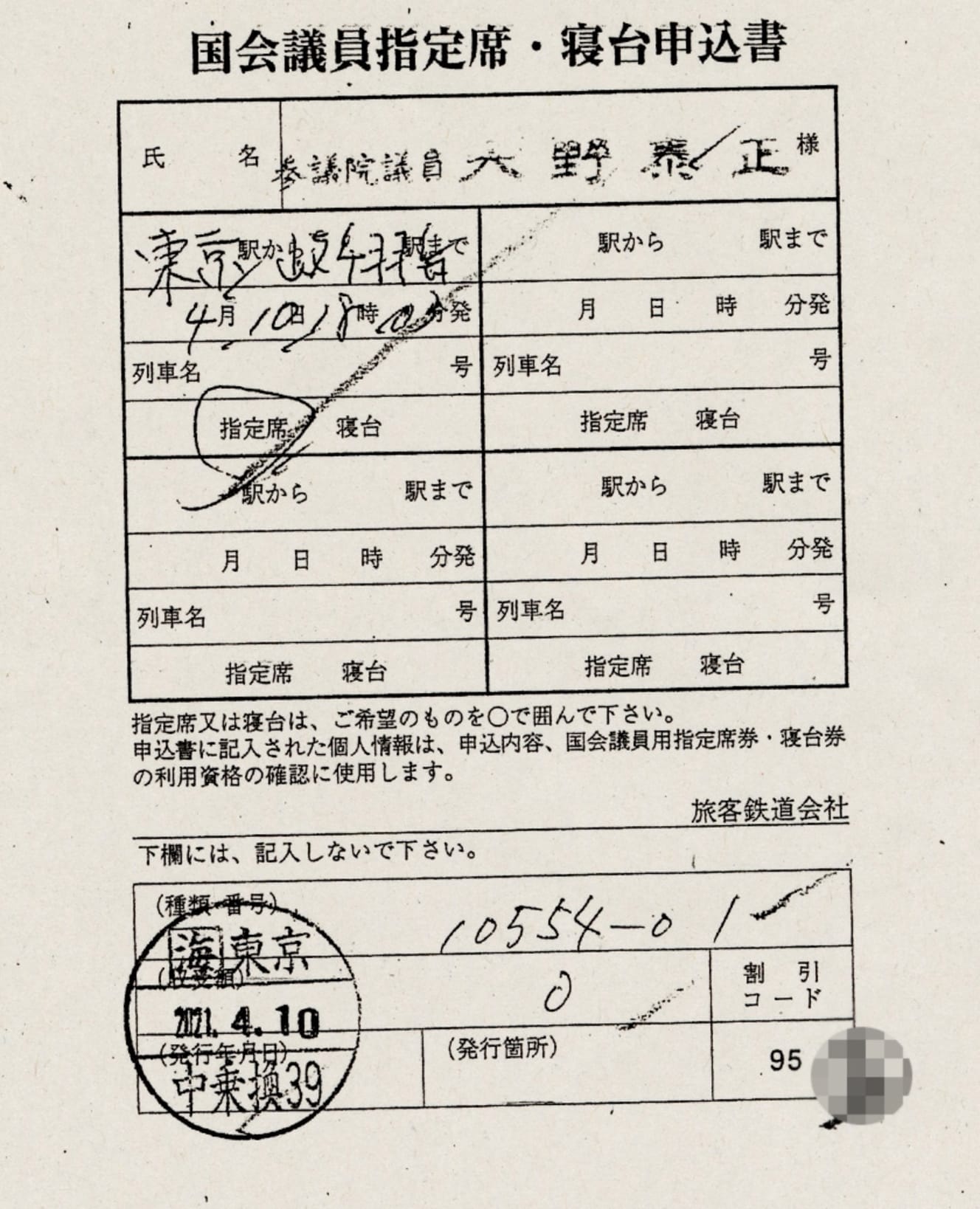Uncovering Alleged Misuse of JR Free Pass in Addition to the Liberal Democratic Party 51 Million Yen Slush Fund Scandal
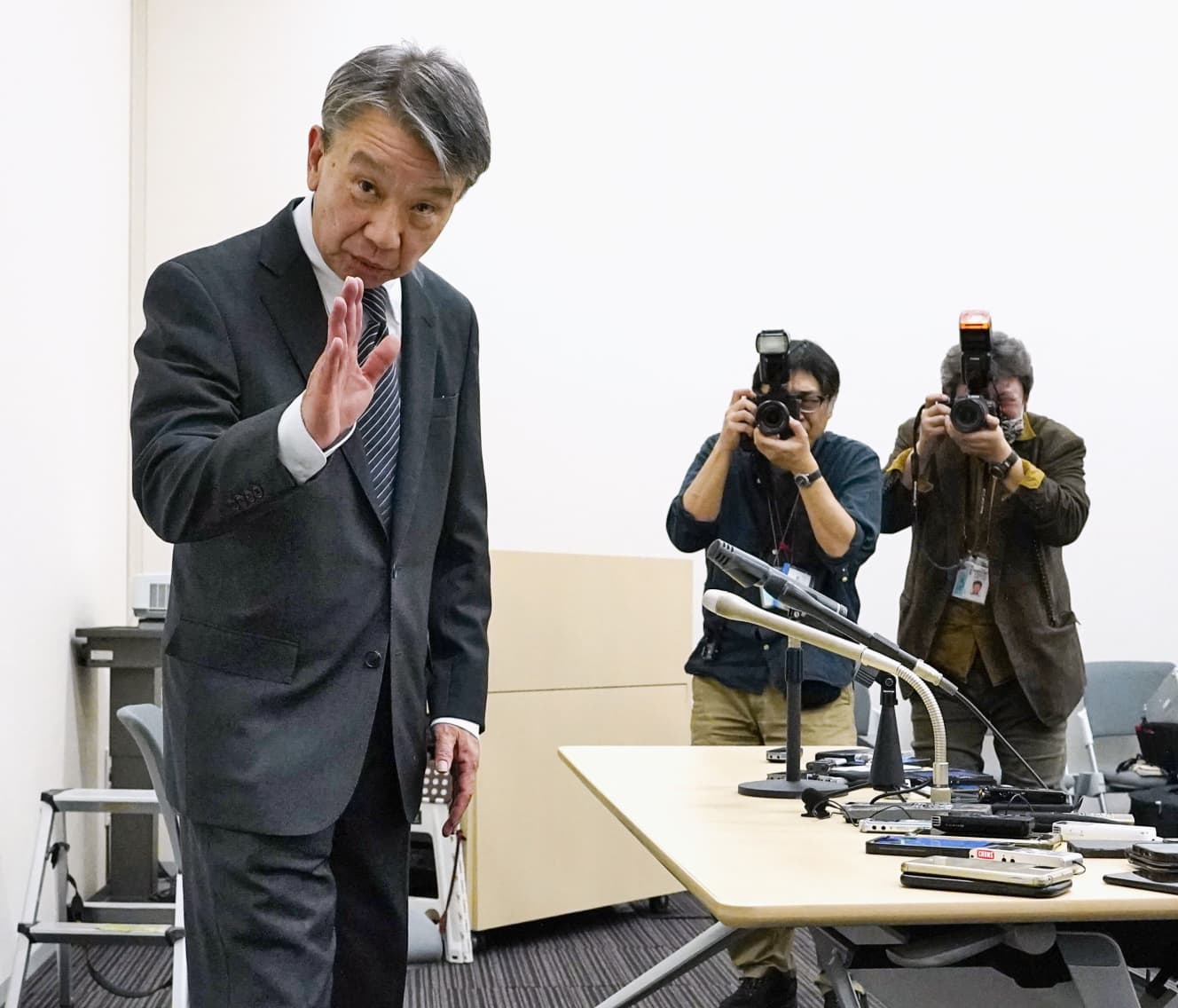
Former Vice President of the Liberal Democratic Party, Banmutsumi Ohno, who used Watanabe Tsuneo, a reporter for a political sword who was a reporter, and used him vertically and horizontally for political work. There is a local office of Ono Taisei, a member of the House of Councillors (who left the Liberal Democratic Party in January), which is a five-minute drive from Gifu-Hashima Station on the Tokaido Shinkansen, where there is a statue of him.
In the problem of the faction of the Liberal Democratic Party that turned part of the income from political fund parties into a slush fund, when the investigation by the Tokyo District Public Prosecutor’s Office intensified at the end of last year, this building with its characteristic light green outer wall became surrounded by reporters every day. In the case of Mr. Ono, the suspicion arose that he received about 51 million yen, the largest amount among the members of parliament who received slush funds, from the faction.
“When the Tokyo District Public Prosecutor’s Office indicted Mr. Ohno on January 19 for violating the Political Funds Control Law (false entry), Mr. Ono started calling supporters in his hometown. The mobile phone, which had been set with a picture of his only daughter, was seized by the Tokyo District Public Prosecutor’s Office, so he called from the fixed phone in the local office. Now that the investigation has settled down, he comes back to his hometown mainly on weekends, but to avoid the eyes of reporters, he sometimes uses Nagoya Station instead of getting off at Gifu-Hashima Station,” said a source related to the Gifu Prefecture branch of the Liberal Democratic Party.
At a press conference after being charged, Mr. Ono denied the slush fund suspicions, saying, “There is nothing wrong.” According to supporters who purchased faction party tickets, Mr. Ono explained that he received money from the Abe faction at the time, but he didn’t touch any of it, and there seems to be no suspicious use.
The politics and money problem that caused a sensation in society has been left to the judiciary, but Mr. Ohno has another problem related to parliamentary privileges. That is the suspicion of illegal use of the “JR Free Pass” for members of parliament.
“The JR Free Pass is a card the size of a business card, given to members of parliament based on the Salary Act. By showing the pass at the manned ticket gates at stations, you can ride on all JR lines nationwide for free. Express tickets are also free, and when using the Shinkansen, you can travel in the Green Car. Only members of parliament themselves are eligible for such privileges, and office staff and relatives of members of parliament cannot use them.
In fiscal 2023, about 500 million yen in taxes was used to cover both houses of parliament. Despite this, in the past, weekly magazines have raised suspicions of improper use by officials such as the Vice Chief Cabinet Secretary of the Aso Cabinet and a member of the House of Representatives, Shiori Yamao (at the time),” said a reporter from a national newspaper’s political department.
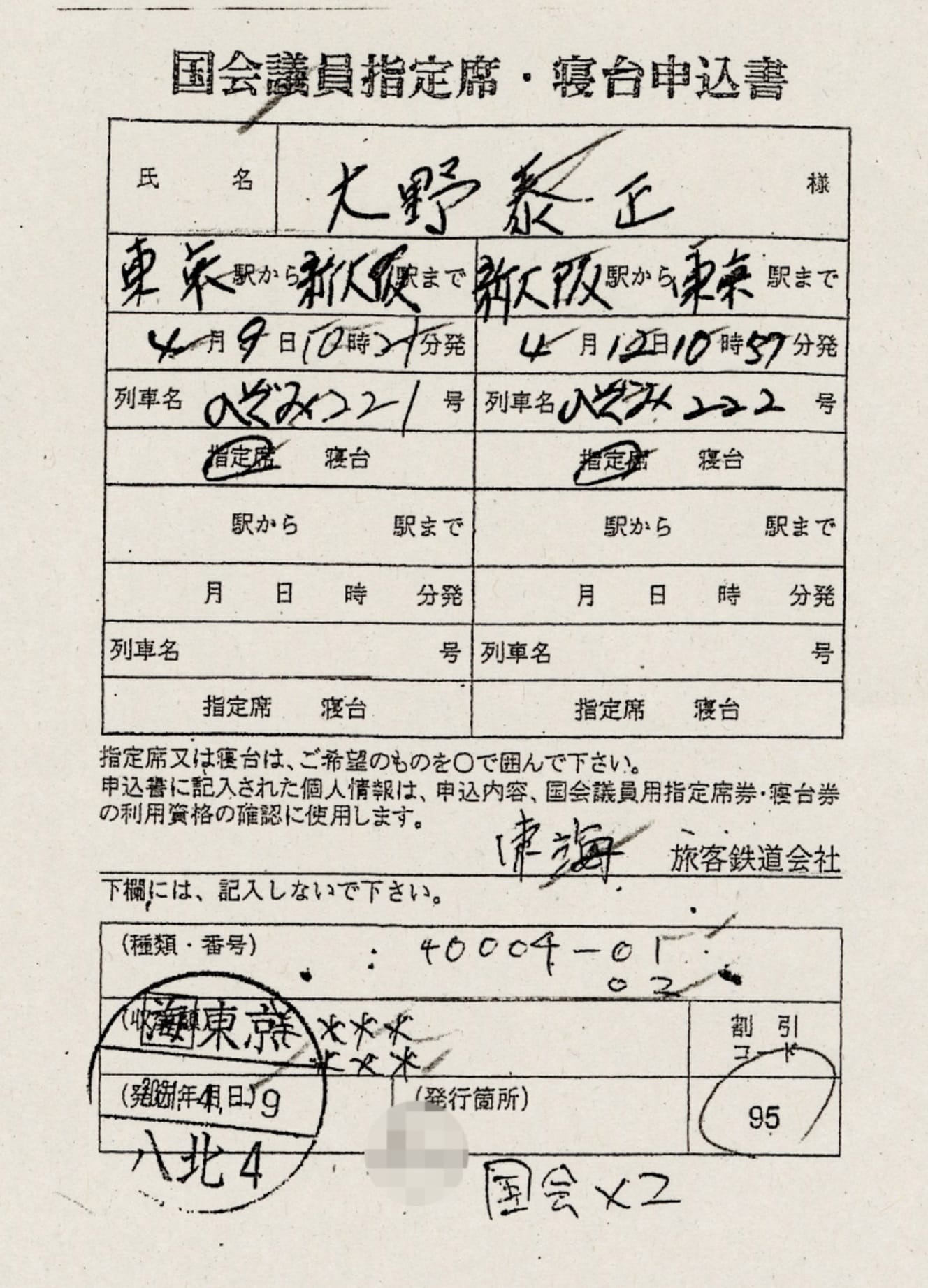
The basis that supports this new suspicion is the “Member of Parliament Designated Seat / Sleeper Reservation Form (hereinafter referred to as the ‘Application Form’)” that is believed to have been submitted by Congressman Ohno during his use of the Shinkansen.
The application form includes the name of the member of parliament and the railway section used and is exchanged for an express ticket at the window. However, among the application forms obtained by this magazine, there are contradictory application forms that cannot be used by one person physically. Specifically, the following are examples, all from 2021:
①April 9, 10:21am Shinkansen Nozomi 221 from Tokyo to Shin-Osaka / April 12, 10:57am Nozomi 222 from Shin-Osaka to Tokyo
③Nozomi No. 221 from Tokyo at 18:00 on April 10 (to Gifu Hashima)
Nozomi No. 8 (to Fukuyama) from Nozomi No. 8 (to Fukuyama) from Nozomi No. 8 (to Fukuyama) from Nozomi No. 8 (to Fukuyama) from Nozomi No. 35 (to Hiroshima) from Kyoto at 15:23 on the same day.
For application form 2, parts with handwritten characters are obscured due to being unclear or left blank.
Application forms 1 and 2 both have date stamps indicating the day of travel, which is believed to have been stamped at Tokyo Station. Additionally, for application form 3, there is a date stamp with “Gifu-Hashima” written on it. These are all believed to be cases where Congressman Oono himself or someone from his office presented the application form at the window, and express tickets were issued on the spot.
Both Congressman Oono himself and staff from his office may have visited the window for the following reasons:
“The issuance of designated tickets (including express tickets) at the window is handled by submitting the application form alone. These application forms are created by each of JR’s passenger companies and distributed to the offices of each member of parliament through both houses of parliament. Therefore, it is assumed that only members of parliament or their legitimate proxies possess the application forms. In addition, members of parliament are asked to present their JR Free Pass at the gates or elsewhere when using the railway.”
Returning to the verification of the application forms, if Congressman Oono stayed in Osaka from April 9th to 12th, as in example 1, then using application forms 2 and 3 to travel to Gifu or Hiroshima would not be possible. However, it is not impossible to travel by car separately or to ride the Shinkansen at one’s own expense, but such movements would be unnatural.
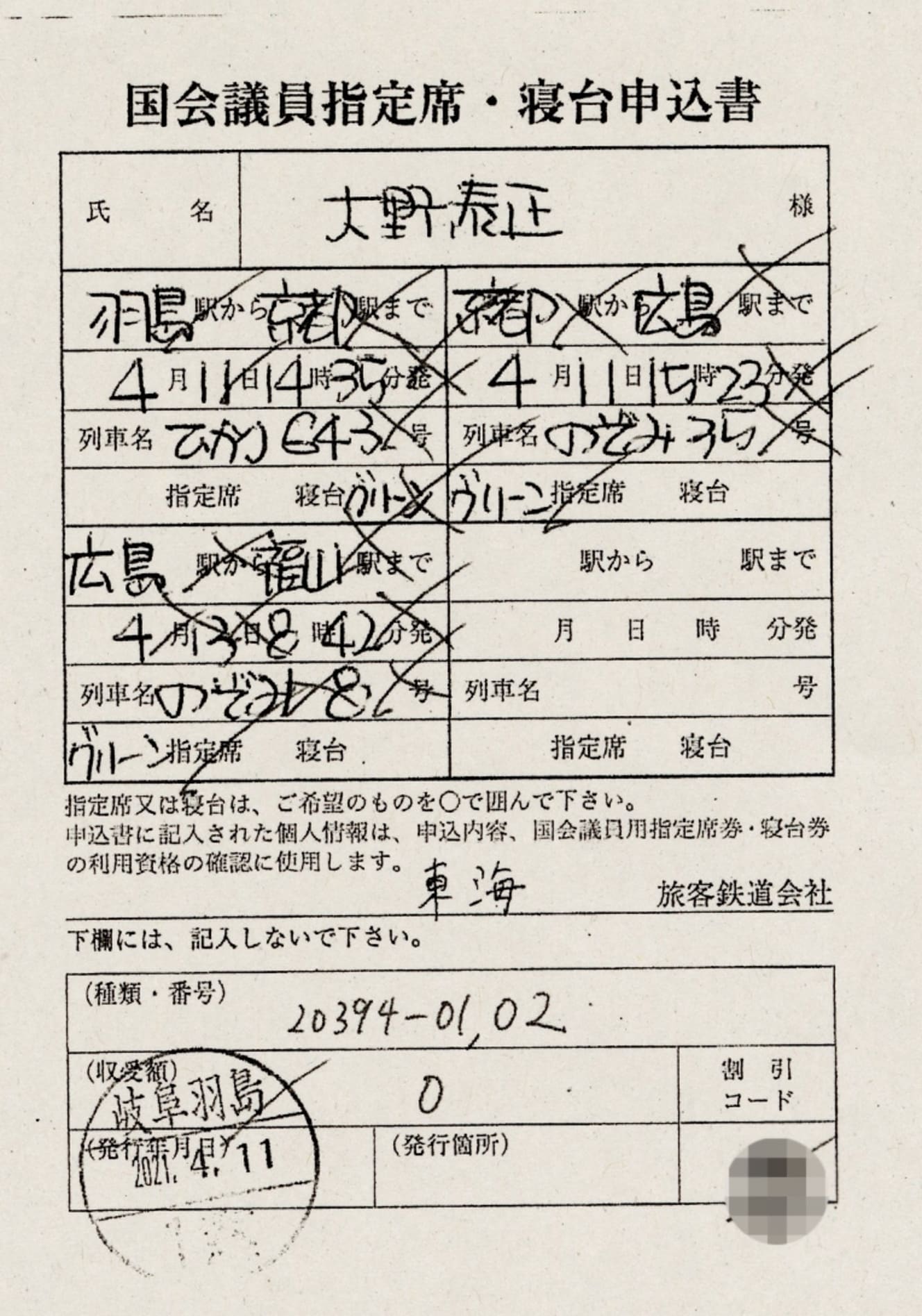

There are other alleged application forms.
(iv) Nozomi No. 219 from Tokyo at 10:00 on October 8 (to Shin-Osaka) / Nozomi No. 222 from Shin-Osaka at 10:57 on October 10 (to Tokyo)
⑤October 10, 20:15 (Gifu) Hikari No. 664 from Hashima (to Tokyo)
⑥Oct. 11, 12:10 (Tokyo) Nozomi No. 31 (to Nagoya)/Oct. 11, 14:00 (Nagoya) Shinano (to Tajimi)
While there are no contradictions when looking at only these three application forms, according to the Facebook page of Representative Ono, it is known that he was engaged in political activities within Gifu Prefecture on October 9th. In that case, to logically explain forms ④ and ⑤, Ono would have had to travel between Tokyo, Osaka, and Gifu from October 8th to 9th, and then between Gifu, Osaka, Tokyo, Gifu, and Tokyo from October 9th to 10th.
When directly confronted about this unnatural use of the Shinkansen, Representative Ono only responded with, “I don’t really understand.” When asked again in writing, he gave the following response:
“For application form 2, it seems to have been used for supporting the local mayor’s election, and for application form 3, it seems to have been used for supporting the reelection in the Hiroshima electoral district, and for inspecting ryokan operators affected by the COVID-19 pandemic. As for form 5, it appears that I used it on my return to Tokyo after participating in a seminar at the Gifu City branch of the Liberal Democratic Party.”
Regarding the remaining application forms, he responded as follows,
“Regarding former Senator A (real name provided in the response), it is considered that he fraudulently used my name. “
What does this mean? In 2022, former Senator A was arrested by the Aichi Prefectural Police on suspicion of fraud for using an expired pass that he had received during his term in office but failed to return to ride the Shinkansen.
“At the trial, it was revealed that Senator A had filled in Representative Ono’s name on the application form and received a special ticket from the JR window. Representative Ono was involved in the incident.” (Local journalist)
In that case, does it mean that the application forms obtained by this magazine were forged by Senator A? However, we cannot simply accept Representative Ono’s explanation. Senator A’s defense lawyer speaks out:
“After being convicted, Senator A has been working to fully clarify the details of the unauthorized boarding and has been compensating the victims through discussions with JR Tokai. As a result, it has been confirmed that he did not travel from Tokyo to Shin-Osaka as shown in forms ① and ④. In reality, Senator A repeatedly took the Shinkansen from Nagoya, near his home, to the Tokyo area for medical treatment.”
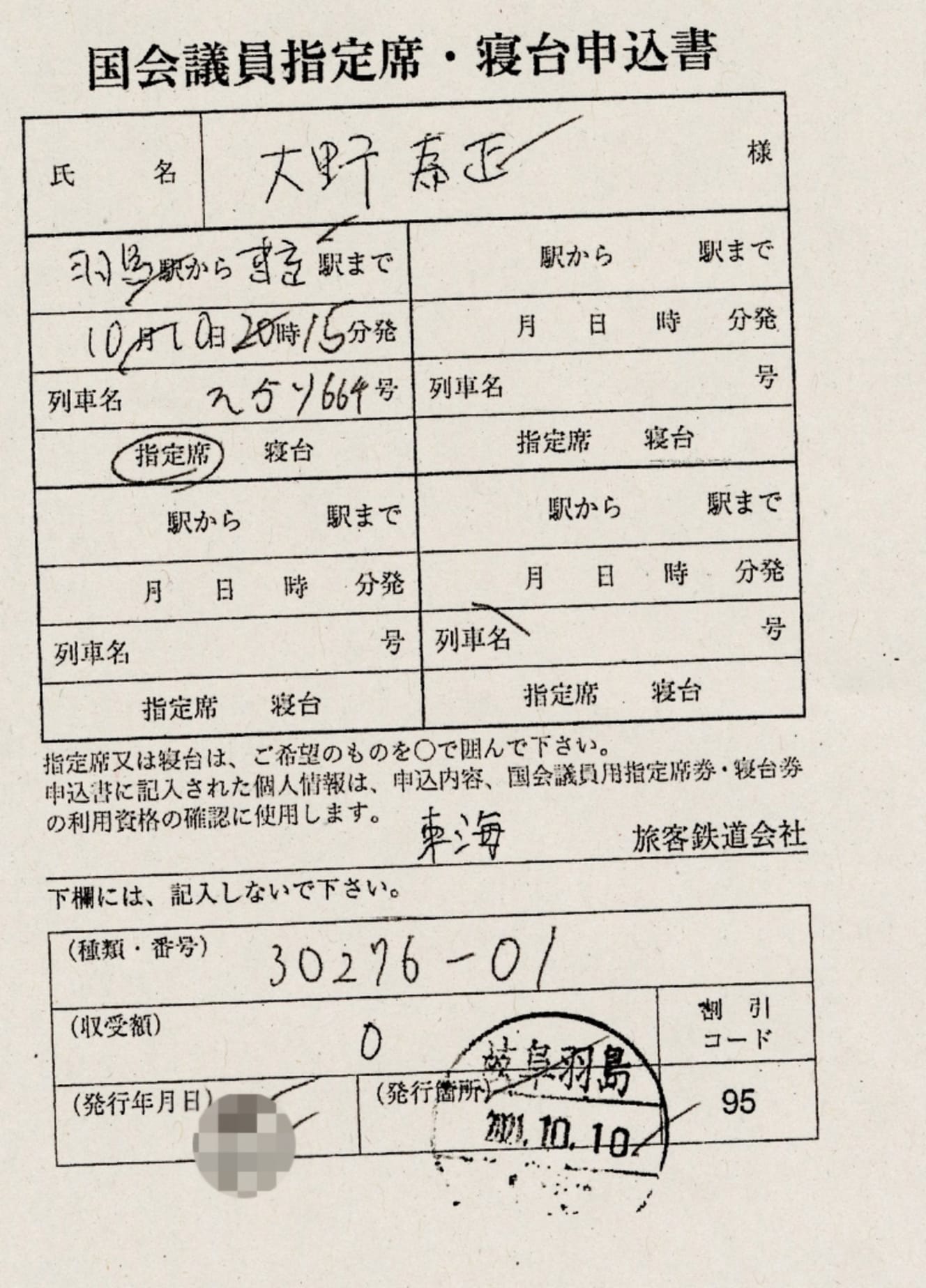
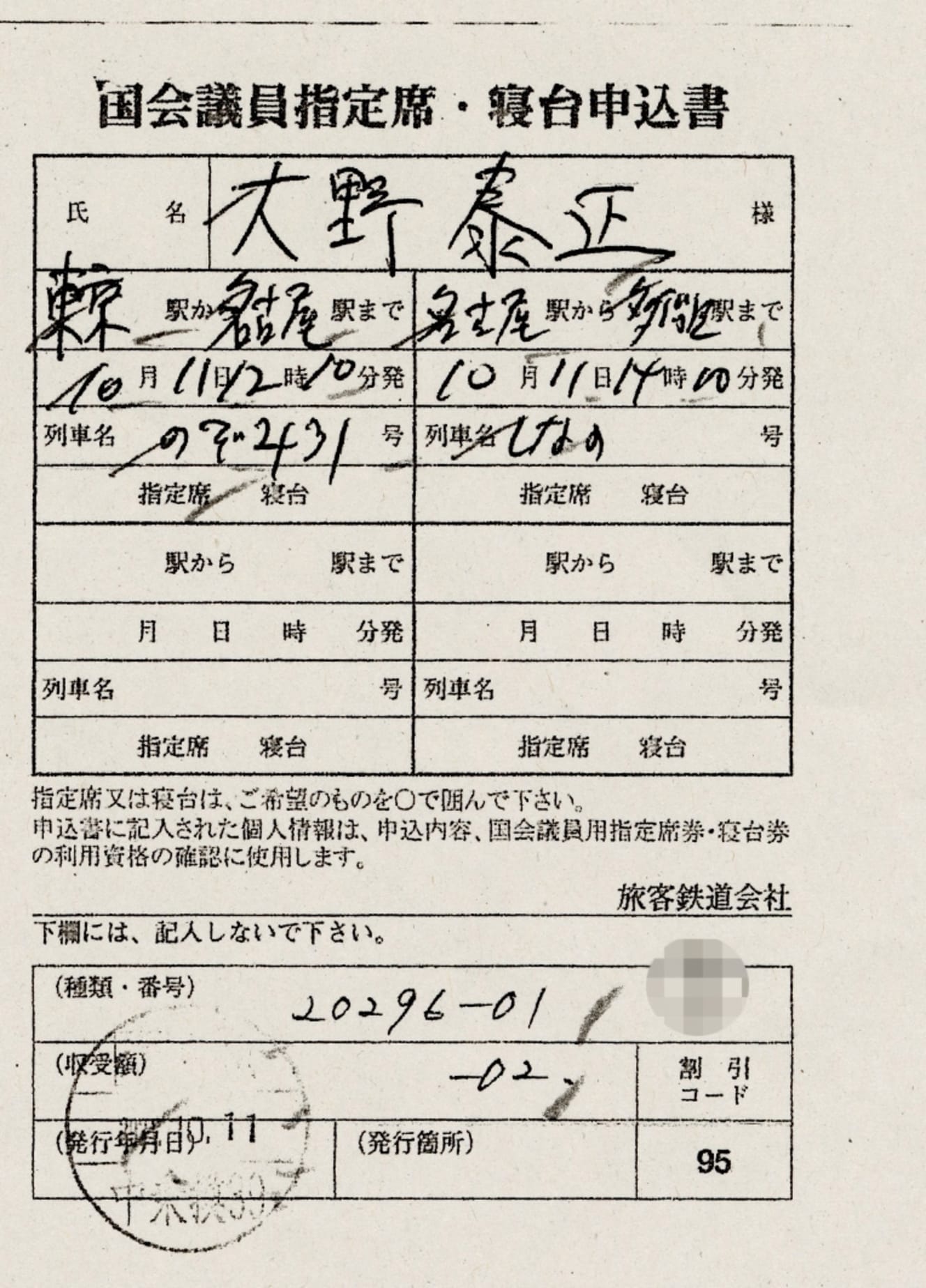
There is additional testimony that undermines the credibility of Representative Ono’s explanation. This magazine obtained documents with Representative Ono’s signature. Subsequently, forms 1 and 4, which appeared to have similar handwriting to the documents where Ono claims “Mr. A used my name for fraudulent use,” were analyzed by experts.
Masaki Tamura, Director of the Japanese Graphology Association and Chief Appraiser at Tamura Appraisal Investigation in Yokohama, states,
“As a result of the analysis, it was concluded that the signatures on forms 1 and 4 and those on the documents are ‘of the same nature in handwriting.’ In other words, there is a high likelihood that these were all written by the same individual.
Although the application forms and documents were written with different writing instruments, there is a certain limit to the accuracy of the analysis. Nevertheless, similarities were noted in the positioning of the first and second strokes of the character ‘大,’ the starting point of the third stroke, and more. The spaces between the first and second strokes of the character ‘野’ and the angle and length of the fourth and fifth strokes of the character ‘泰’ are also similar. From the perspective of the balance in size of the four kanji characters in the name, similarities can be observed.”
Let’s reconsider forms 1 and 4 under the assumption that Representative Ohno himself wrote them.
Both of these were round trips between Tokyo and Shin-Osaka. As mentioned earlier, there is some overlap in the periods covered by forms 1, 2, and 3. Additionally, since Representative Ono admits to using forms 2 and 3, the handwriting analysis further strengthens the contradictions.
On the other hand, suspicions deepened regarding form 4, which states that it departed from Tokyo Station at 10:00 AM on October 8th. On this day, Prime Minister Fumio Kishida was delivering his inaugural policy speech in both houses of the Diet.
It is unlikely for a member of the Diet to miss such an important event in the Diet. In fact, when we confirmed with Representative Ohno’s office in writing, the response was, “On October 8th, 2021, I attended the plenary session of the House of Councillors.” Since Prime Minister Kishida’s speech in the House of Councillors began after 3:00 PM, it would have been possible to travel between Tokyo and Shin-Osaka. However, such an explanation is highly implausible.
Therefore, to rationally explain both cases, including form 1 and form 4, it is necessary to consider the involvement of a third party.
For example, let’s assume that Representative Ono filled in the necessary details on the application forms himself and handed them to someone else. As mentioned earlier, JR passenger companies issue express tickets at the window even without a JR free pass, as long as there is an application form. Therefore, the person who received the application form from Representative Ono could have received the express ticket free of charge at the Tokyo Station window. This person may have borne the cost of the ticket themselves. However, by using the obtained express ticket for free along with the free express ticket, they could have traveled between Tokyo and Shin-Osaka at a lower cost than usual.
In other words, Representative Ono may have exploited the loophole in the JR free pass system, including the application forms, to commit fraudulent use. Amid the whirlwind of the slush fund scandal, Representative Ono is now facing new suspicions.
Interview and text by Naoyuki Miyashita (nonfiction writer)
naoyukimiyashita@pm.me
Interview and text by Naoyuki Miyashita (nonfiction): Naoyuki Miyashita (nonfiction writer)
